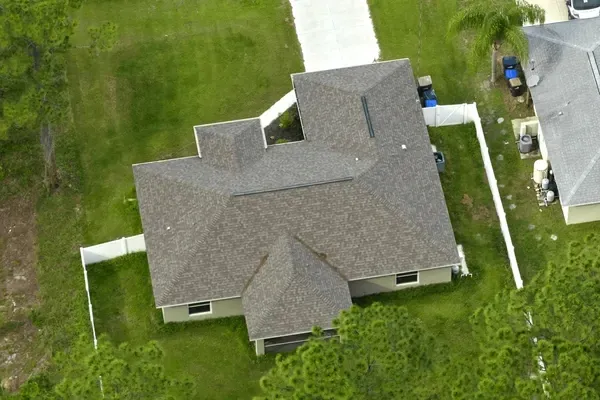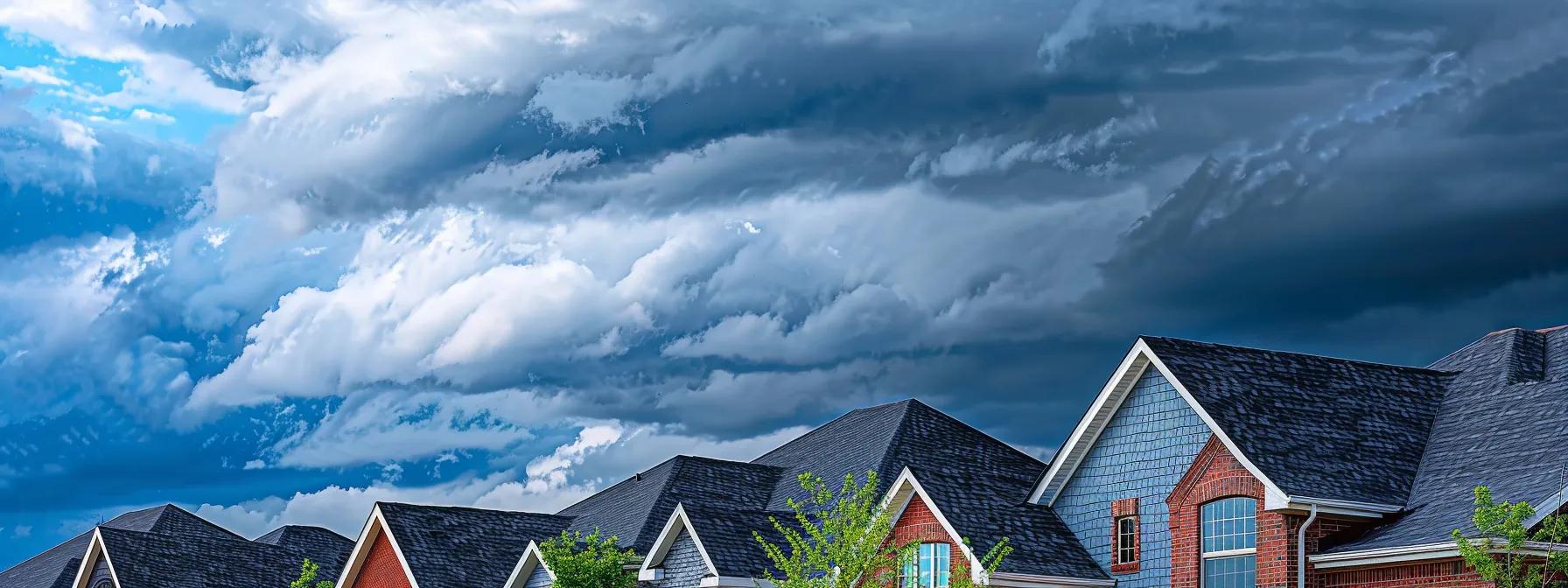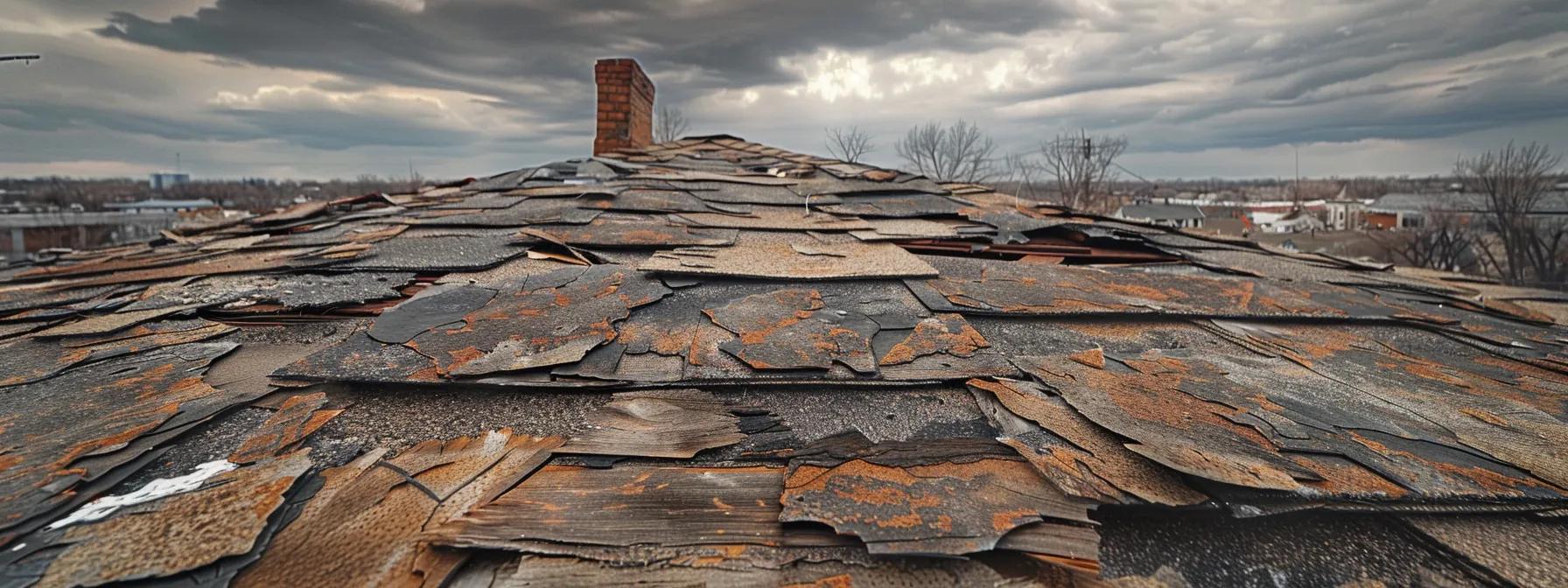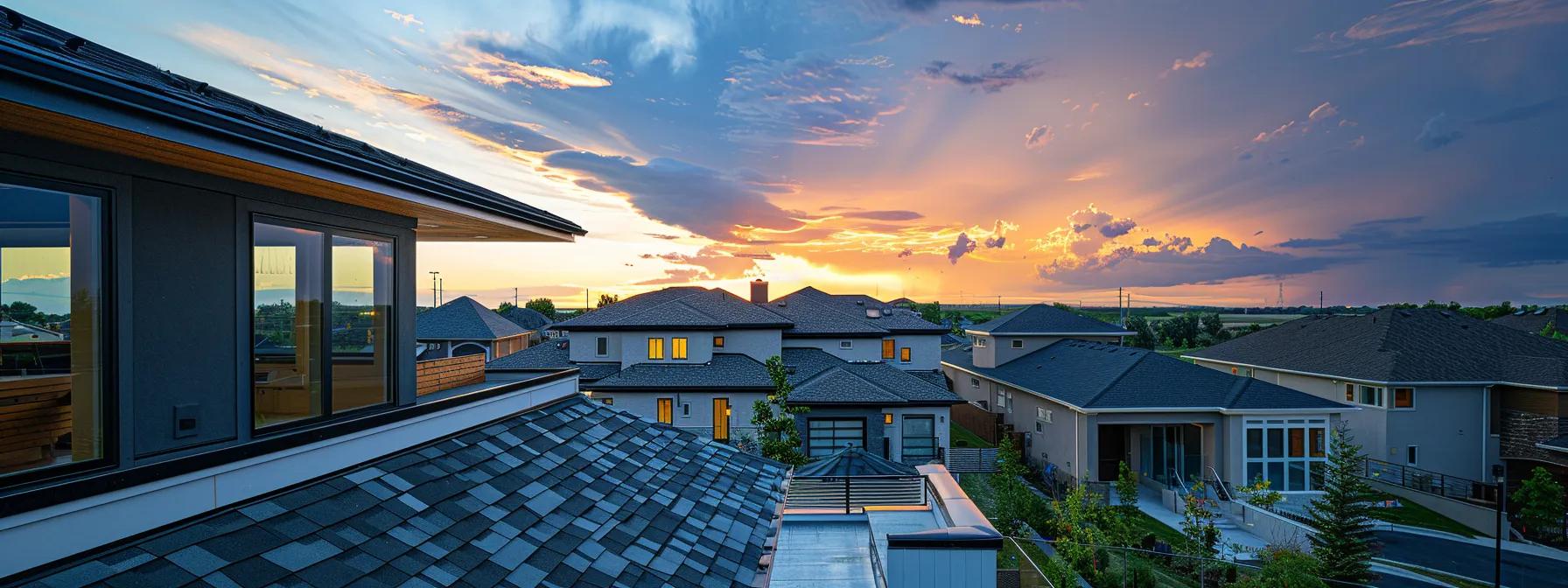
How Missouri Weather Affects Roof Strength & Safety
Understanding How Missouri's Weather Impacts Your Roof's Longevity and Protection Against Elements
Missouri’s diverse weather conditions impose significant challenges on residential roofs. Homeowners are often unaware of how seasonal extremes and severe weather can accelerate roof deterioration, compromise leak protection, and lead to costly repairs or replacement. Expert roofing professionals stress that understanding these weather-induced challenges is critical for preserving roof integrity, ensuring long-term safety, and maintaining energy efficiency.
What Are the Key Weather Challenges Missouri Roofs Face?
Missouri experiences a range of weather phenomena throughout the year. Homeowners must deal with drastic temperature shifts, frequent hailstorms, heavy snowfall, and strong winds. Each type of weather stress affects roof materials differently, making it essential to understand these nuances for proper roof care.
How Do Seasonal Temperature Fluctuations Affect Roof Materials?
Seasonal temperature changes cause roofing materials to expand when heated and contract when cooled. Over time, this cycle can lead to cracks in shingles, loosened fasteners, or dislodged roof tiles, compromising the roof’s protective barrier. Continuous thermal stress may reduce the lifespan of materials by up to 20%.
What Impact Does Missouri’s Hail Season Have on Roof Durability?
Hailstorms in Missouri can inflict severe damage on roofs. Hailstones over 1 inch in diameter can dent, crack, or puncture roofing materials. Such impacts not only mar the roof's appearance but also create entry points for water, leading to leaks and mold growth. Many insurance claims for roof repairs in Missouri are related to hail damage.
How Do Heavy Snow and Ice Influence Roof Integrity?
Heavy snow accumulation and subsequent ice formation can lead to ice dams. Ice dams occur when melting snow refreezes at the roof's edge, blocking proper drainage. This can cause water to back up under shingles, resulting in leaks, water damage, and rot. The weight of snow can also strain the roof structure, particularly in older homes, and may lead to sagging or require structural reinforcement.
What Are the Effects of Strong Winds and Storms on Roof Stability?
Missouri’s high winds and violent storms pose a direct threat to roof stability. Strong gusts can rip shingles or loosen flashing around chimneys and skylights. Additionally, wind-driven rain can exploit these vulnerabilities, accelerating deterioration. Uplift forces from storms can also compromise the adhesion of roofing materials, leading to premature aging and water infiltration.
How Does Missouri’s Climate Influence Roof Material Selection?

Missouri’s variable climate requires homeowners to choose roofing materials that can handle extreme weather. The proper selection of roofing material is crucial for performance and longevity, helping to prevent water infiltration, structural damage, and energy inefficiency.
Which Roofing Materials Best Resist Missouri’s Hail and Wind?
Metal roofs and impact-resistant shingles are particularly effective against Missouri’s hail and wind. Metal roofing is durable, resists impact damage, and reflects sunlight, which reduces cooling costs in summer. Impact-resistant asphalt shingles, with their reinforced layers, offer extra protection against hail impacts and high winds. These materials often come with extended warranties as a testament to their resilience.
How Do Temperature Extremes Affect Different Roofing Types?
Temperature extremes affect materials in varied ways. Asphalt shingles can become brittle in harsh winters and overly flexible in very hot conditions, whereas slate and tile roofs generally offer higher thermal stability. Metal roofs, naturally expanding and contracting, distribute thermal stress evenly. Comparative studies have shown that metal roofs have a 30% lower failure rate than conventional asphalt roofs under similar conditions.
What Are the Benefits of Weather-Resistant Roofing Options in Missouri?
Weather-resistant roofing options reduce the need for frequent repairs and lower long-term maintenance costs. They also improve energy efficiency by providing superior insulation, helping keep homes cooler in summer and warmer in winter. Enhanced durability improves home safety by minimizing risks of water damage, mold growth, and structural deterioration. For Missouri homeowners, investing in materials designed for extreme weather is both smart and cost-effective over time.
How Can Regular Roof Maintenance Extend Your Roof’s Lifespan in Missouri?
Regular maintenance is essential to protect your Missouri roof from harsh weather. Routine inspections, timely repairs, and preventive measures work together to extend the roof’s lifespan and maintain its protective qualities.
What Maintenance Practices Prevent Weather-Related Roof Damage?
Preventing weather-related damage starts with regular roof inspections to spot early wear. Homeowners should clear debris from gutters and downspouts to ensure proper drainage, treat algae and mildew buildup, and repair any damaged shingles promptly. Applying a protective roof coating can seal minor cracks and help fend off further damage. Annual professional inspections are recommended to identify issues that might be missed during routine checks.
How Often Should Missouri Homeowners Schedule Roof Inspections?
Missouri homeowners should schedule inspections at least once a year, ideally in early spring before severe weather hits. A mid-year inspection after a significant storm or hail event is also beneficial. Regular inspections not only catch minor issues early but also serve as important documentation for insurance claims when weather-related damage occurs.
What Are the Signs of Weather Damage to Watch For?
Key signs of weather damage include missing or curled shingles, water stains on ceilings, sagging roof decks, and debris-filled gutters. Other indicators are cracked flashing, discoloration around roof penetrations, and pooling water. Early detection allows for timely repairs, helping to prevent small issues from evolving into major structural failures.
What Are the Most Common Weather-Related Roof Problems in Missouri?

Missouri roofs are vulnerable to several common weather-related issues that can compromise roof functionality if left unaddressed.
How Does Hail Damage Manifest on Roofs?
Hail damage appears as depressions, cracks, or loss of granules on asphalt shingles. In severe cases, large hailstones can puncture or even break shingles, creating immediate water infiltration risks. Over time, minor hail damage can open pathways for leaks, leading to interior water damage and mold growth.
What Causes Roof Leaks During Missouri’s Rainy Seasons?
Roof leaks during rainy seasons typically result from a mix of aging materials and weather-induced damage. Deteriorated flashing, improperly sealed joints, and damaged shingles that no longer provide a watertight barrier are common culprits. Clogged gutters can also force water onto the roof, stressing vulnerable areas and exacerbating leaks.
How Do Freeze-Thaw Cycles Lead to Roof Deterioration?
Freeze-thaw cycles stress roofing materials as water infiltrates small cracks and freezes, expanding by up to 9%. This repeated process gradually widens cracks, dislodges granules, and ultimately causes significant material breakdown. Homeowners in harsh winter climates may notice accelerated wear due to these cycles, making regular maintenance and eventual replacement necessary.
How Do Missouri Roofing Experts Protect Your Roof Against Weather Elements?
Missouri roofing professionals use specialized strategies and high-quality materials to fortify roofs against extreme weather. They combine local weather knowledge with innovative repair methods to maximize roof longevity and reduce potential damage.
What Specialized Services Do Missouri Roofers Offer for Weather Damage?
Many Missouri roofers offer services specifically designed to counteract weather damage. These include installing impact-resistant roofs, applying roof coatings that provide an extra water barrier, and offering emergency repairs after severe storms. Some roofers also employ drone or satellite inspections to detect micro-damages that might be missed during manual checks, ensuring targeted and effective repairs.
How Do Roofing Warranties Cover Weather-Related Issues?
Reputable contractors in Missouri typically offer warranties covering defects and manufacturing issues that can include some weather-related wear. However, these warranties often do not cover damage from severe events like hailstorms or strong winds unless specified. Homeowners should review warranty terms carefully and might consider supplemental weather protection plans or maintenance agreements to ensure regular inspections and prompt repairs.
Why Is Local Weather Knowledge Crucial for Effective Roof Care?
Local weather knowledge is essential because Missouri’s weather patterns vary widely by region. Roofing experts with local experience understand the specific challenges—whether it’s severe hail in northern areas or frequent freeze-thaw cycles in central Missouri. This expertise informs the selection of materials and maintenance techniques that best mitigate local weather risks, ensuring roofs are optimally resilient.
How Can Homeowners Prepare Their Roofs for Missouri’s Extreme Weather?

Preparation is the best defense against Missouri’s extreme weather. Proactive measures and strategic planning can safeguard roofs before severe weather strikes, reducing damage and repair costs.
What Are the Best Practices for Winterizing Your Roof in Missouri?
Effective winterizing involves several key practices. Homeowners should clear gutters and downspouts to ensure proper drainage of melting snow and insulate the attic to maintain a consistent roof temperature, reducing the risk of ice dams. Additionally, applying a high-quality sealant and checking for vulnerabilities in flashing or seams before winter can help prevent leaks and extend the roof’s life.
How Can You Protect Your Roof During Missouri’s Storm Season?
During storm season, roof protection involves reinforcing vulnerable areas such as roof edges and chimney flashing with additional sealants or barriers. Securing loose shingles or tiles and implementing storm-proofing measures further reduce damage risks. In hail-prone regions, installing impact-resistant roofing can significantly enhance roof longevity. It is also wise to have a contingency plan and keep emergency repair contacts readily available.
What Role Does Proper Ventilation Play in Roof Longevity?
Proper roof ventilation is critical for regulating attic temperature and preventing moisture build-up. Adequate airflow helps ward off ice dam formation in winter and minimizes mold risk in summer. A well-ventilated roof balances interior and exterior temperatures, reducing stress on roofing materials, and ultimately extending the roof’s lifespan.
When Is Roof Replacement Necessary Due to Missouri Weather Damage?
Roof replacement becomes necessary when cumulative weather damage makes repairs insufficient for long-term protection. Homeowners should know when to replace rather than repeatedly repair their roof to avoid recurring issues and escalating costs.
How Do You Assess if Weather Damage Warrants a Roof Replacement?
A comprehensive inspection of the roof can determine if replacement is needed. Key indicators include extensive shingle loss, significant granule deterioration, persistent leaks despite repairs, and noticeable structural sagging. If repair costs approach a large percentage of the roof’s current value or if problems recur even after multiple repairs, a full replacement may be the most cost-effective solution.
What Are the Signs That Your Roof Has Reached the End of Its Lifespan?
Warning signs include sagging sections, numerous broken or missing shingles, ongoing granule loss from asphalt shingles, and continuous leaks. Homeowners might also see increased energy bills due to reduced insulation, along with interior water damage and signs of mold. Regular professional inspections help determine when these issues are severe enough that replacement is more prudent than further repairs.
How Does Choosing the Right Replacement Roof Improve Weather Resistance?
Opting for a replacement roof with advanced materials improves a home’s weather resistance. Modern roofing systems may feature impact-resistant shingles, energy-efficient metal panels, or synthetic materials that mimic traditional styles but perform better under extreme conditions. Additionally, new roofs often come with comprehensive warranties and performance guarantees, providing homeowners with confidence in their investment against hail, wind, snow, and temperature extremes.
List: Key Roof Maintenance Tasks for Missouri Homeowners
Homeowners can follow these essential maintenance tasks annually to mitigate weather damage:
Clean Gutters and Downspouts – Ensure proper drainage and prevent water backup.
Inspect Shingles and Flashing – Identify early signs of cracks, granule loss, or dislodged components.
Check for Ice Dam Formation – Monitor roof edges during winter for potential moisture intrusion.
Remove Debris – Keep the roof surface free from leaves and branches that might trap moisture.
Schedule a Professional Inspection – Obtain a thorough evaluation of roof integrity and early damage detection.
Regular adherence to these tasks helps prolong the roof’s life by catching problems before they escalate.
Frequently Asked Questions
Q: How do extreme weather conditions accelerate roof deterioration? A: Extreme weather causes repeated expansion and contraction, hail impacts, ice dam formation, and structural stress from heavy snowfall and high winds.
Q: Can regular roof inspections really make a difference in long-term roof maintenance? A: Yes, annual inspections detect early damage, allowing for timely repairs that prevent further deterioration and extend the roof’s lifespan.
Q: Which roofing material is generally recommended for hail-prone areas in Missouri? A: Metal roofing and impact-resistant asphalt shingles are highly recommended because of their durability and resistance to physical impact.
Q: What is the primary benefit of proper roof ventilation in Missouri’s climate? A: Proper ventilation regulates attic temperature and moisture, reducing the risk of ice dam formation and preserving roof materials against thermal stress.
Q: How does local weather expertise influence roofing solution choices? A: Local experts understand regional weather patterns and can recommend materials and maintenance practices that address Missouri’s specific climate challenges.
Final Thoughts
Missouri homeowners must approach roof care with a clear understanding of local weather challenges. Extreme conditions like hail, heavy snow, ice dams, and high winds can significantly shorten a roof’s lifespan if not properly managed. Investing in weather-resistant materials and maintaining routine upkeep not only extends roof longevity but also enhances home safety and energy efficiency. By taking a proactive approach and relying on expert roofing advice, homeowners can protect their investment against unpredictable weather and secure lasting protection for their home.
